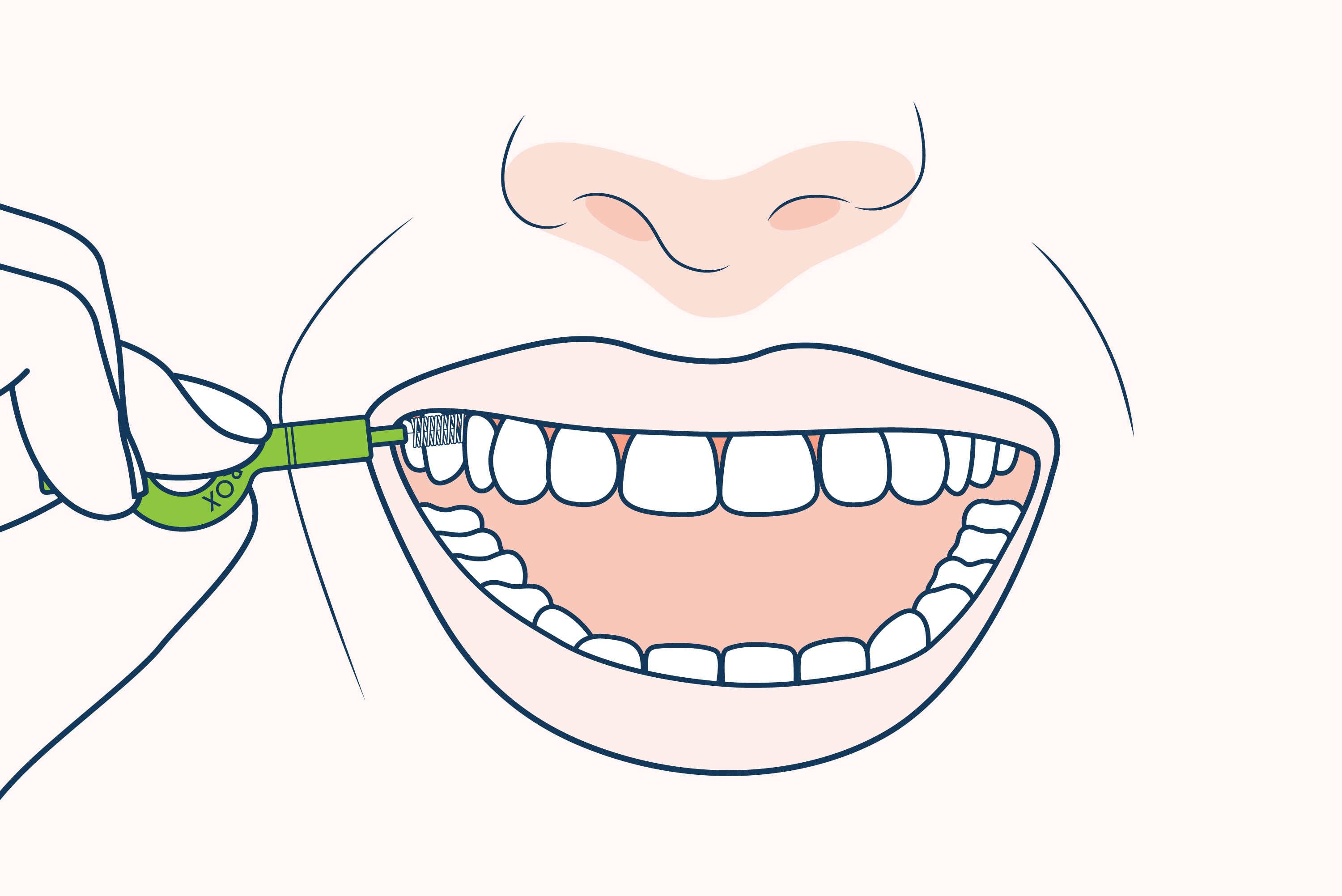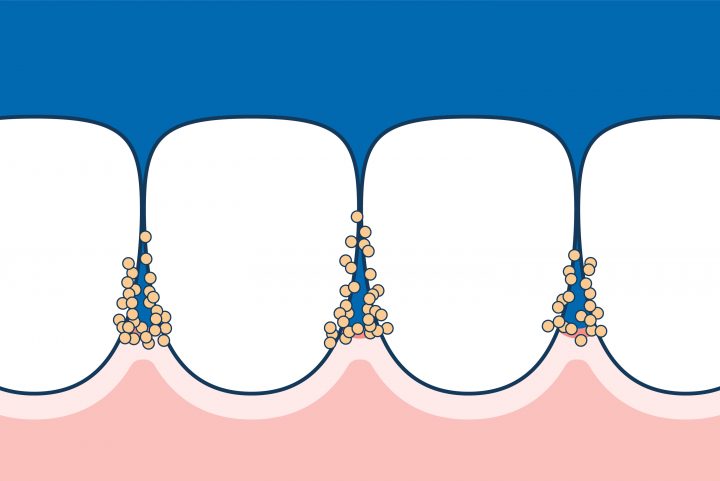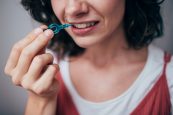
Dear CURAPROX,
My friends have been talking about switching from dental floss to interdental brushes for better oral care and more effective brushing. It seems that everyone is talking about interdentals, but how do I make sure they’re right for me? Is there a way to see whether I should use them or not? What is the professional perspective on interdentals?
— Alex M., Hamburg
Dear Alex,
Although this advice comes from a certified professional, be sure to see your dentist before you do anything new to your teeth.
The question now is not whether you should use interdentals or not – it’s about proper selection of these brushes and techniques. So make sure you see your dentist to get help with selecting the right size and type of interdental brush and learning proper interdental brushing techniques.
Having said that, let’s look at interdentals and oral care in general to give you a better understanding.
The problem: when natural biofilm turns into dental plaque
Like with almost everything in nature, there are always some bacteria in your mouth and on your teeth. Bacteria are basically everywhere: in the air, in food, on your skin, the whole world is covered in them, so don’t be surprised.
Usually, these bacteria are in perfect balance with the protective agents in our mouth. We have certain antibacterial agents in our saliva that keep the normal bacterial flora in check. But when bacteria meet a hard surface (our teeth) in a moist environment, they tend to settle on that surface and start building up.



In our mouth, bacteria build structures that we call biofilm – it’s a layer of living organisms reinforced with protective elements. This biofilm allows bacteria to live and breed in a more protected environment. Basically, biofilm is like bacteria building villages, towns and cities – but on your teeth. The bacteria have no concern about your well-being, so they just build the film wherever they can.
When bacteria breed in the safety of biofilm, they produce a lot of waste. The bigger and stronger the biofilm, the more waste bacteria produce. This waste offsets the chemical balance on our teeth, and leads to tooth decay, bad breath and all sorts of gum disease. When the film is too thick and strong, we call it dental plaque. Naturally, we want to avoid plaque as much as we can.
How to destroy the plaque
The only way to properly destroy the biofilm is physically disrupting its structure. You take a soft toothbrush and clean your teeth: two times a day, gently and thoroughly, front and back, until the teeth are clean. Rushing through the process won’t work: when you don’t brush properly, there’s a lot of biofilm left on the teeth, so bacteria have no problem rebuilding their colonies in the next few hours.



Using a mouthwash instead of brushing won’t work either: the film can get really strong, so a mouthwash won’t do any lasting damage. You might feel freshness in your mouth, but this feeling merely masks the fact that the biofilm is still there, and the bacterial colony is growing stronger.
The same goes for chewing gum: it masks bad breath, but the bacterial colonies are still there, breeding and producing waste. To get rid of the plaque, you’ve got to brush; there is no other way.
Toothpaste also plays an important role in fighting the plaque: the biofilm gets destroyed through the mechanical brushing action, and then the paste helps increase your natural defence (given that it contains fluoride, but that’s a story for another time). However, the paste alone doesn’t work.
Dental plaque hides in the interdental space
Typical brushing only covers the front of your teeth. Proper brushing has to cover the front and back. But no conventional brush can reach the areas at the sides of your teeth – we call those areas the interdental space. When you have food stuck in your teeth, that’s where it goes.
Everyone has some sort of interdental space, but since your tongue isn’t thin enough to get there, you might think you have none. But you do: if you ever used a toothpick, that’s where it went.

Interdental space is the best place for the biofilm to accumulate: it’s usually undisturbed, quiet and full of nutrients. So even people with great brushing habits can have dental plaque accumulating in the interdental space. This place has to be cleaned.
Cleaning the interdental space: flossing vs. interdental brush
There are two common ways to clean interdental space: dental floss and interdental brushes.
According to a recent meta-analysis, interdental brushes are significantly more effective and less aggressive than floss. Dentists also point to the fact that floss can cut into gums and damage them, while the interdental brush doesn’t do that. However, some places will only allow access by floss, and your dentist will indicate this if needed.
Interdental brushes go between your teeth and destroy the structures of the biofilm. A simple in-and-out movement is usually enough. The brush is then rinsed clean and can be reused.
Unlike dental floss, interdental brushes have bristles that get into all corners and spaces and clean out the plaque. This makes them more effective than floss.


For different sizes of interdental spaces, you need different sizes of interdental brushes. Make sure your dentist picks out the proper sizes for you and tests them out with you. You might get different interdentals for different parts of your mouth: for example, you’ll have front teeth cleaned with the thinner brush, and your back teeth with a thicker one.
It’s critical to follow your dentist’s recommendations on the sizes of your interdentals. Cleaning with a brush that is too small can be ineffective – the bristles won’t do the job. If the brush is too big, it won’t fit. Toothbrush makers have enough sizes for all teeth, so just follow your dentist’s recommendations.
What to consider when you choose an interdental
Since interdentals go between your teeth, you have to choose their size carefully to avoid any damage or unpleasantness. It’s best to see your dentist and have them measure your interdental space. Every dentist has a proper tool that helps them measure precisely your interdental space and match it with a proper type of interdental brush. You’ll get a recommendation for the exact size of the brush and maybe even some samples to try at home.


It’s a good idea to try using your new interdental while still in your dentist’s office. That way, you’ll make sure you’re doing it right and not damaging your teeth and gums. Feel free to ask any questions and get familiar with your new interdentals before taking them home.
Some people experience temporary bleeding when they use an interdental for the first time: this is a sign that a mild form of gum disease has already started near the interdental space, and by brushing you’ve disrupted a small portion of the gum that contains tiny blood vessels. It’s a good thing you caught it early, because a little later you could be getting the same kind of bleeding from conventional brushing. Don’t worry: once you clean out the biofilm from in between your teeth, the gum inflammation will go away, the blood vessels will be protected and there’ll be no bleeding.
If the bleeding persists, contact your dentist.
What to avoid
Do not self-diagnose gum diseases, do not measure your own interdental space and do not stock up on interdental brushes based on self-diagnosis. Interdentals have to be picked by a professional who can expertly evaluate your teeth. There are many kinds of interdental brushes that suit certain tooth conditions, so don’t self-prescribe or self-medicate, no matter how user-friendly the packaging looks.
Do not replace regular brushing with interdental brushing altogether. Interdental cleaning is a part of your brushing ritual. Proper regular toothbrushing is still vital: soft brush, gentle circular motions, front and back, until clean, twice a day.
It’s generally a good idea to avoid a high-carb, high-sugar diet as it reduces your saliva’s capacity to protect your teeth. Bacteria breed better when sugars abound, so don’t give them the opportunity.
If you have diabetes or immune-related issues, be extra careful with your oral hygiene and interdental space. Lowered immune response weakens your gums’ ability to counteract the bacteria that are already on your teeth, making gums more susceptible to inflammation.



